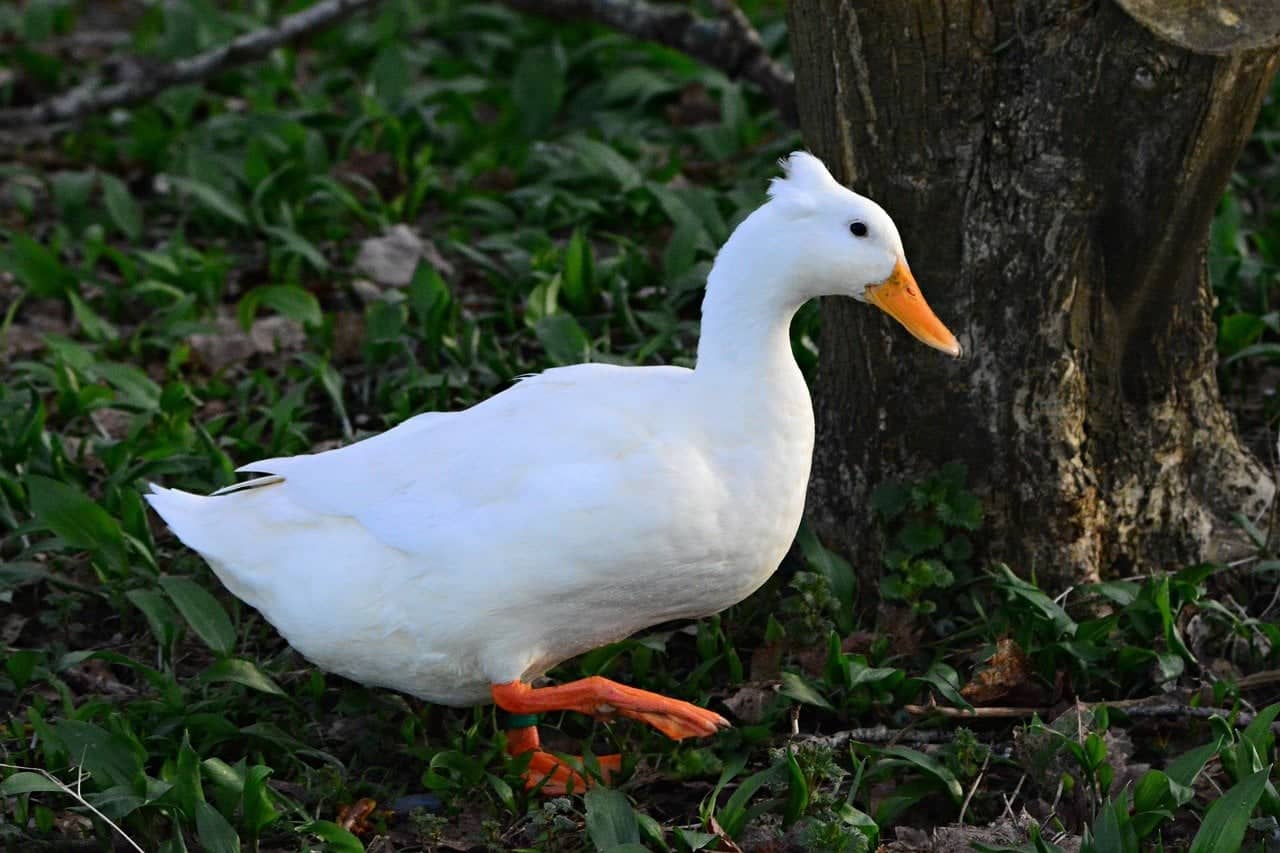The Bali Duck, also known as the Balinese Crested Duck or Crested Runner Duck, is a beautiful domesticated duck. Although they can be good at laying eggs, they’re often kept as pets or for show.
They’re one of the oldest domesticated duck breeds, but it’s quite rare to find them, especially outside of Bali.
 Quick Facts About Bali Ducks
Quick Facts About Bali Ducks
| Breed Name: | Bali Duck |
| Place of Origin: | Bali, Indonesia |
| Uses: | Pets, laying |
| Male Size: | 6-7 pounds |
| Female Size: | 5-6 pounds |
| Color: | White |
| Lifespan: | 4-10 years |
| Climate Tolerance: | Moderate |
| Care Level: | Easy |
| Production: | Eggs |
Bali Duck Origins
As their name states, this duck breed originates from Bali, Indonesia. It’s believed to have been co-existing with people for thousands of years, as depictions of them can be found in stone carvings in ancient temples.
Breeding the Bali Duck is quite difficult, so it’s highly unlikely to find them living outside of Southeast Asia.
Bali Duck Characteristics
Although the Bali Duck is a beautiful bird, it’s actually difficult to produce because of its signature crest. The crested gene is also a lethal variant, and many Bali ducks with the crest also, unfortunately, end up being born with other physical deformities. This is because the crest is actually a hole in the skull, so if the hole isn’t properly positioned, it’s often fatal for the duckling.
Two Bali Ducks with the crest are not able to produce eggs that hatch. So, to boost a higher mortality rate, a crested Bali Duck is bred with a non-crested breed. This results in the majority of ducklings not possessing the crest. Also, Bali Ducks aren’t broody and don’t tend to be good mothers.
If you’re able to care for one of these rare ducks, you’ll notice that they’re fun and entertaining pets. They’re not good flyers, but they’re great at foraging. These birds can cover a lot of ground and like to eat a lot of common garden pests.
Bali Ducks are also quite friendly, so it’s fun to have them around, and they won’t cause any trouble.
Uses
Bali Ducks are mainly bred as pets, but they’re also decent egg layers. They can produce between 120 to 250 eggs a year. Bali Duck eggs are on the larger side and can be a blue-green color or white color.
Appearance & Varieties
The Bali Duck is mostly all white, but you can also find ducks with brown and black feathers with a mallard pattern. A pure Bali Duck will have a poofy crest positioned at the back of its head.
These ducks stand relatively upright and have slender bodies that resemble the shape of a bowling pin. This stance makes them quite entertaining to watch as they walk and waddle around.
Population & Habitat
The Bali Duck is mainly found in Bali, but you can find some flocks of them in Malaysia. They were also introduced to the UK in 1925, but they’re still very rare.
Bali Ducks can do well living in different kinds of climates as long as the weather isn’t too extreme. So, the principal factor that’s keeping their population small is the difficulty with breeding.
 Are Bali Ducks Good for Small-Scale Farming?
Are Bali Ducks Good for Small-Scale Farming?
While Balinese Ducks may be good at laying eggs, they’re not the best duck breed for small-scale farming. They’re extremely rare, and it’s difficult to raise healthy ducklings. Also, they need a lot of space to forage, so they can take up a lot of land. These birds are small, so they’re not really harvested for poultry meat.
Overall, the Balinese Duck is a bird that leaves a memorable impression. If you have the pleasure of meeting one in person, make sure to spend an adequate amount of time with them. There’s no telling if you’ll ever meet another one!
Featured Image Credit: MabelAmber, Pixabay
